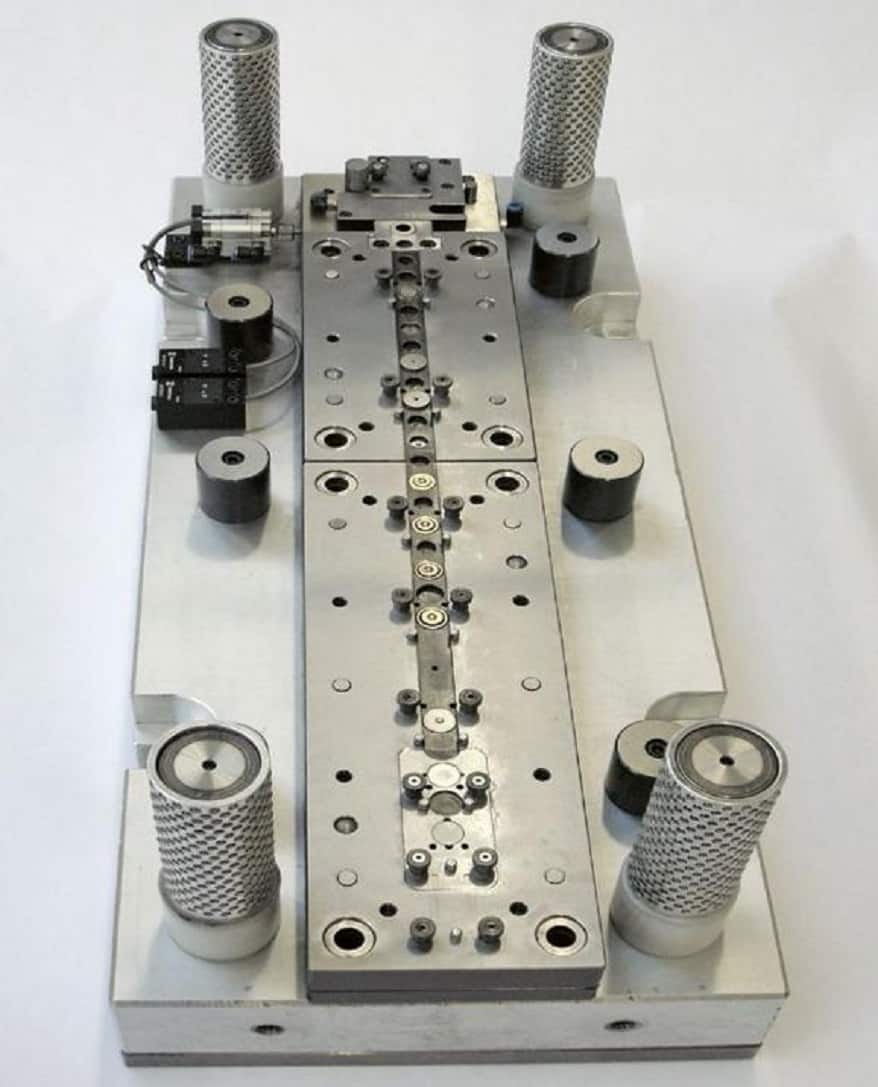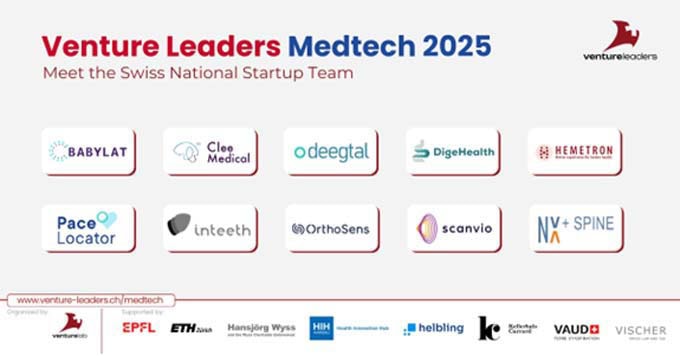It pays to think outside the box
Punching and fineblanking instead of turning and milling: the Swiss company etampa in Grenchen is opening up new manufacturing possibilities through substitution, thereby achieving considerable savings potential.

Even if the focus of many design engineers is clearly on machining, it is more than worthwhile to think outside the box. Because what non-cutting production technology has to offer is far too rarely considered. A pity really.
Examine materials closely
There are only a few criteria that have to be fulfilled in order to be able to stamp or fine-blank a turned part. The material must be available in ring form and thus be a rolled product; however, this is generally the case today for every material group and for almost all material requirements. Then it must have the necessary formability, i.e. meet certain requirements for flow behaviour. At etampa AG, the Swiss precision manufacturer for stamping and fineblanking based in Grenchen in the canton of Solothurn, this is achieved, for example, by annealing raw material. The actual processing takes place in a soft state, and the stamped or fineblanked part is subsequently hardened if necessary.
Part geometry is important
The part geometry also plays an important role, because there is a connection between the load capacity of the tools and production. For example, when it comes to hole diameters: Among other things, this defines how small a hole can be punched in a material without the punch breaking. Technological peculiarities such as punch feed, burr or cutting surface shape must also be sufficiently taken into account and adapted to the punching process. And last, but not least, the thickness of the material is important.
Marco Costa, head of design and new tool construction and with over 20 years of etampa experience, an "old hand" in the industry: "With punching, we can process material thicknesses of 0.1 to 4 mm, and with fine blanking from 0.5 to 7 mm without any problems. If a customer is thinking about substituting stamping or fineblanking for turning, the rule of thumb is: the thinner the material, the more likely it is to be considered for substitution. This is not least due to the fact that high forces often act on the parts during machining, which could damage the geometry of the parts."
Significantly better material utilization
However, according to Costa, there are many other factors that need to be taken into account, and this is a matter of consideration in each individual case. He gives an example: "Suppose I produce a round part, material thickness 3 mm, and use a single-drop tool for this. If I then cut a disc with a very large hole from a strip, i.e. produce a circular ring, then we as punchers initially have a less than optimal material utilization." For a lathe operator, things look different at first glance: In such a case, he buys a tube; since he has to machine and cut off the inner and outer diameters, he uses much less material at this point. But, Costa points out: "If we replace a three-dimensional part with a drawn part and form a sleeve or bush from a flat, round blank, then we have a much better material utilization compared to turning, because in the case of turning, you almost have to draw from the solid. The part has to be completely hollowed out, and that in turn means that considerably more chips are produced than punching waste in the alternative production variant.
Punching is recommended for high quantities and in lightweight construction.
Can general recommendations be made as to which parts in metal-cutting production, and perhaps also in which branches of industry, are predestined for substitution? Hans-Rudolf Haefeli, owner and CEO of etampa: "Punching and fine blanking are generally interesting alternatives when it comes to either high quantities or the weight of the parts to be produced; the latter is often the case in lightweight construction, especially in the automotive sector. In addition, depending on the part to be manufactured, one or more process steps can be saved: "Take a valve seat, for example, where the ball goes in; it has to be calibrated, and this normally happens on the assembly line. With us, this step is built directly into the progressive die, thus saving another processing step."
High production speeda
As far as the high quantities required are concerned, these are, so to speak, a mathematical prerequisite, says Haefeli, because the fact that a tool has to be manufactured first results in significantly higher initial costs for punching than for turning.
"Depending on parts production, the prime costs are amortized within months."
However: "What you also have to consider is the speed at which the punching or fineblanking can be done. We have molds in use that have eight or more cavities, and that means that eight or more parts fall out with every single stroke. And then when you consider the long life of the tools, you're back in the dark green very quickly." In turning, on the other hand, a part is produced every ten seconds on average: "That's a more than significant difference." Depending on the part production, the production costs are often amortized within a few months, says Haefeli.
Scrap or rejects?
At this point, says Haefeli, he would like to make one thing very clear once again: "In any case, the handling of the so-called scrap that arises during production must be included in the sub-titution and thus in the productivity considerations, and I deliberately say scrap and not rejects here. Contrary to popular belief, turning produces fewer chips and therefore less scrap than punching; in our case it is not chips that are produced, it is punching grids or punching waste. These are separated according to grade and class, sold to a scrap dealer and recycled." The special thing about this is that the scrap quantity is part of the parts price from the start and is credited to the customer. This is especially true when it comes to expensive materials, such as copper, copper alloys or titanium. Haefeli: "These things have to be clearly stated in the offer and have now become an essential part of the contract award process. Transparency is clearly required here."
Significant savings potential ensures winners on both sides
Can he estimate the positive substitution potential as a win-win situation for all parties involved, i.e. for potential customers and for you as a manufacturer? Haefeli doesn't have to think long: "I am firmly convinced that up to 20% of the parts that are turned or milled today can be stamped, both from a material and geometric point of view. And if you then consider that stamping production will be cheaper against 30%, then you only have winners on both sides. The potential savings are considerable."









